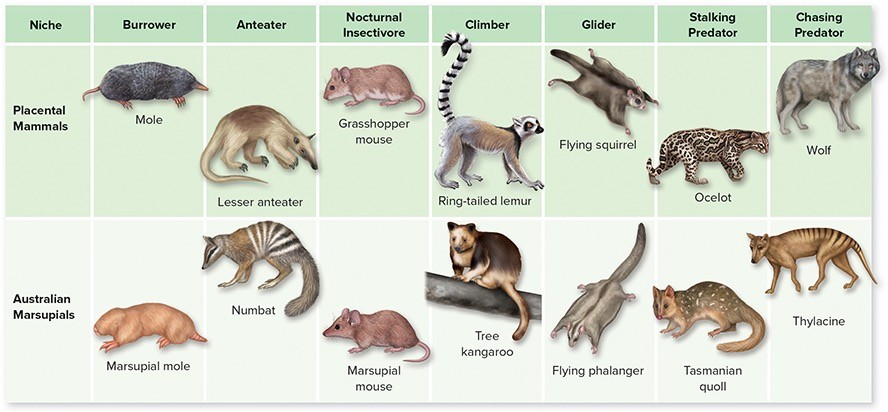Marsupials are a very ancestral form of mammal, evolving before placental mammals over 70 million years ago. Today Australian marsupials can be compared to placental mammals on other continents. When you compare Australian marsupials to placental mammals today
When you compare Australian marsupials to placental mammals today
A. the marsupial fossils look remarkably similar to the placental mammals of today.
B. the marsupials are all very primitive, having changed very little during the last 70 million years.
C. the marsupials are very similar to placental mammals in the ways they have adapted to similar ecological niches.
D. living marsupials are little changed from the earliest marsupial fossil forms.
E. the marsupials have evolved much more rapidly than placental mammals and are more highly adapted.
Answer: C
You might also like to view...
Which of the following are pyrimidine nitrogenous bases?
A) guanine and adenine B) cytosine and uracil C) thymine and guanine D) ribose and deoxyribose E) adenine and thymine
When a bacterium reproduces, its offspring inherit a full complement of genetic information, which includes ____
a. one chromosome plus plasmids b. a genetically complete plasmid c. at least two chromosomes d. two chromosomes plus plasmids e. a single strand of circular DNA
The rate of nutrient cycling in an ecosystem
A) depends only on the rate of photosynthesis. B) depends only on the rate of decomposition. C) does not depend on the rate of photosynthesis or the rate of decomposition. D) depends on both the rate of photosynthesis and the rate of decomposition.
What are bacteroids?
a. specialized nitrifying bacteria b. small buds from ammonifying bacteria c. specialized bacteria that help some plant roots absorb phosphorus d. enlarged and immobilized nitrogen-fixing bacteria